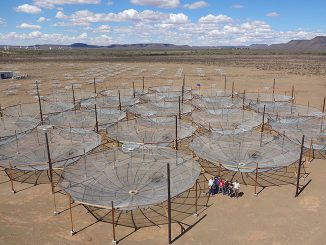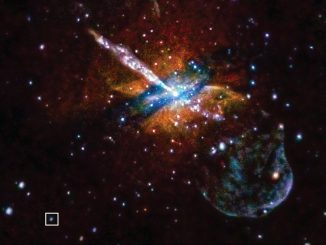
CfA astronomer Sean Andrews and his colleagues have been studying the early stages of planet-forming nebulae around other stars using the fact that such discs are cool and emit radiation primarily in the infrared and submillimeter regimes. The team used the submillimeter camera on the James Clerk Maxwell Telescope in Hawaii to map the emitting dust in a cluster of young stars known as IC348 located in the Perseus molecular cloud about a thousand light-years away from us. The cluster is estimated to be about two to three million years old, and its planetary systems should therefore be partially developed.
The scientists found thirteen submillimeter point sources in the cloud indicative of discs, in a total population of about three hundred and seventy known objects. From its emitted luminosity the scientists can estimate the mass of a disc, and they find these discs range in size between 1.5 and 16 Jupiter-masses — smaller than a MMSN. Their results imply that discs as massive as the early solar system’s are, at least by this age, very rare. Furthermore, expecting that the undetected sources all have smaller and fainter discs, the team combined the observations of all the sources to estimate what the average disc mass was: one-half a Jupiter-mass. The astronomers conclude that fewer than about 1 percent of stars have a MMSN disc. If most discs start off with the solar minimum mass value, therefore, they must have evolved very rapidly in order to have depleted most of the mass after a few millions years.



